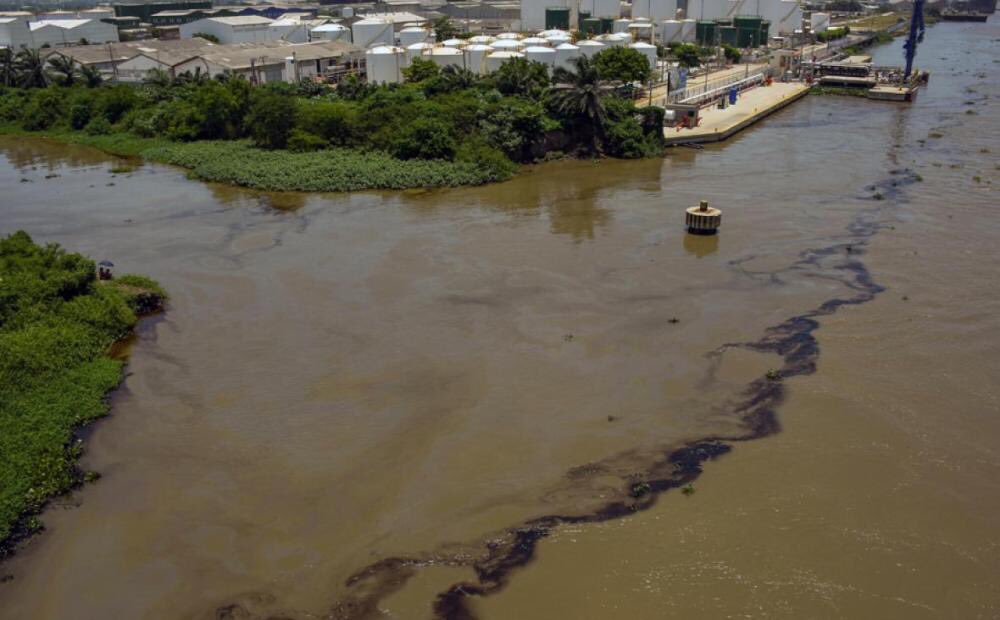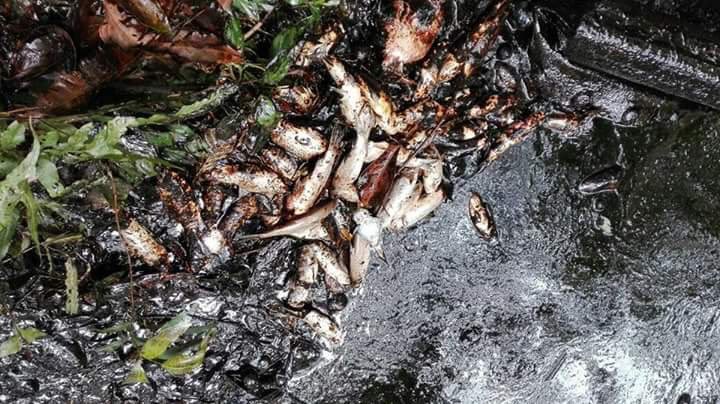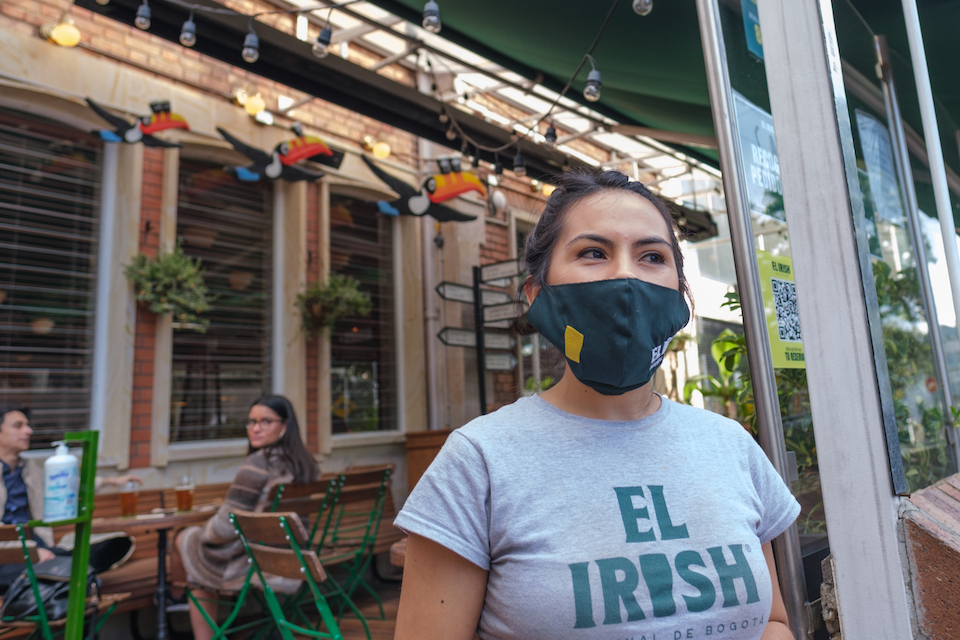
Cleaning a river ecosystem is much more difficult than simply skimming the oil from the surface. Photo: Sergio Grandas Medina
Ecopetrol comes under fire for the environmental disaster in La Lizama
More than 2,400 animals have been killed and over 5,000 trees contaminated by an oil spill in Barrancabermeja, Santander. In addition, 480 people from almost 100 families have been relocated, treated for exposure to the oil or face dramatic loss of income.
Oil well 158 in the La Lizama oil field, owned by Colombian company Ecopetrol, began gushing oil into the La Lizama creek on March 12, creating this environmental disaster. Ecopetrol had the leak under control by March 15, but it took until the end of the month for a team of engineers to safely cap the well. Even so, between March 12 and March 15, Ecopetrol calculate that 550 barrels of oil contaminated both the La Lizama creek and the Sogamoso river, stopping just short of entering the River Magdalena.
Related: Bogotá recycling: A waste of time
President of Ecopetrol, Felipe Bayón, told the Fifth Committee of the Senate, who are debating the disaster, that “we are committed to solving this emergency, we take responsibility for the final closure of the well and the compensation of the communities affected.” However, the National Authority for Environmental Licensing (ANLA), has begun sanction procedures against Ecopetrol as a result of their delay in reporting “the emergency according to the real magnitude of the event.” Ecopetrol had informed ANLA of a small leak on March 3, but they were unprepared for when this small issue developed into a serious spill during the following week. ANLA has been highly critical of Ecopetrol’s management of the situation.
Ecopetrol has since also come under fire from elected officials in the region; the Mayor of Barrancabermeja tweeted that “Ecopetrol is in charge of leaving this environment in the best possible state,” and Governor of Santander Didier Tavera stated that “we ask for environmental compensation,” adding that the equivalent of “30 million alevinos (a local fish) is the minimum we expect to be compensated.”

With so many fish poisoned or dead the fishing industry is looking at hard times ahead. Photo: Sergio Grandas Medina
Ecopetrol did respond quickly when the size of the spill became apparent, installing mechanical booms to slow the progress of the oil downriver and hiring multiple work teams to remove as much as possible from the waterways and surrounding vegetation. They imported mechanical equipment from the US to seal the well, and have been supplying humanitarian aid and supplies to affected communities. However, hundreds of fishermen in the area face a very uncertain future; the temporary work they have found as members of the clean-up crews will not suffice to support them, especially when experts estimate that the ecosystem will take decades to recover.
Now that the well has been capped, controversy surrounds the search for the cause of this environmental catastrophe. Bayón has suggested that seismic activity in the area is at fault, something that would leave Ecopetrol largely blameless. A group of scientists from the Santandereana Society of Geotechnics proposed three theories, including one that the nearby Hidrosogomosa hydroelectric dam had caused an ‘overpressure event’ in the well, meaning that more than 1,000 other abandoned wells in the region could also be at risk. However, the director of ANLA, Claudia Victoria González Hernández, recently stated before congress that there was no evidence of geological fractures in the area around the dam, making this theory unlikely.
Most controversial is the claim by ANLA, put forward in their motion to start the sanctioning procedure, that Ecopetrol was aware of problems with well 158, and had suspended its use during 2016 due to “mechanical problems and faults in the lining or construction of the well.” These issues were noticed by ANH, the National Hydrocarbons Agency, but were not reported to ANLA at the time. Furthermore, a 2015 Comptroller report found that 38 wells in the region, Lizama 158 among them, had not been sealed well enough to legally comply with the government’s ‘well abandonment program’. If ANLA can prove that Ecopetrol neglected safety procedures in abandoning Lizama 158, then hefty fines are sure to follow. For the communities and ecosystem of La Lizama however, the cost is already being paid.
Context: The contamination of Colombia
Unfortunately, this spill isn’t an isolated event in Colombia. In just the last six months there have been three spills caused by guerrilla attacks on oil pipelines. Sadly, this is hardly a new thing.
The Caño Limón-Coveñas pipeline in Santander alone was the target of 1,317 attacks between its inauguration in 1986 and 2015, spilling 3.6 million barrels of oil into the Colombian countryside. That’s more than the Exxon Valdez disaster that polluted Alaska. The oil spilled along that coastline in 1989 can still be found in the ecosystem almost 30 years later, proving that the effects of the La Lizama spill will still be felt long after the actual event becomes little more than old news.
La Lizama stands out as a disaster because the blame, and attention, cannot be shifted onto a guerrilla or paramilitary group, but it is still part of a long and heartbreaking tradition of contamination in one of the most biodiverse countries in the world.





